-
TrackoBit
Manage commercial vehicles with the new-age Fleet Management Software
TrackoBit -
TrackoField
Streamline your scattered workforce with Field Force Management Software
TrackoField -
Features Resources
-
Blog
Carefully curated articles to update you on industrial trends. -
White Paper
Insightful papers and analysis on essential subject matters. -
Glossary
Explore an alphabetical list of relevant industry terms. -
What’s New
Get TrackoBit & TrackoField monthly updates here. -
Case Study
Explore the cases we solved with our diverse solutions. -
Comparisons
Compare platforms, features, and pricing to find your best fit.
-
About Us
Get to know TrackoBit: our team, ethos, values, and vision. -
Careers
Join the most dynamic cult of coders, creatives and changemakers. -
Tech Support
Learn about our technical support team and services in detail. -
Events
Check out the exhibitions where we left our marks and conquered. -
Contact Us
Connect with us and let us know how we can be of service.
How Last Mile Delivery Software Benefits Various Industries
- Author:Ayushi Nagalia
- Read Time:8 min
- Published:
- Last Update: December 16, 2025
Table of Contents
Toggle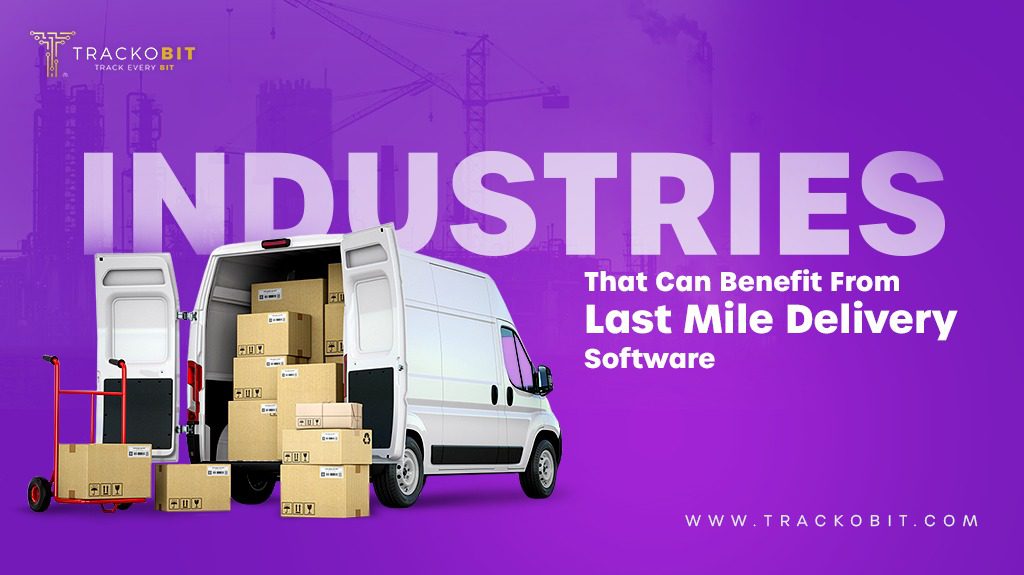
As long as your business involves delivering something to a customer – be it a product or a service, you need last mile delivery software for enhanced operational management!
Table of Contents
Toggle
Even though we’re well past the Covid-havoc days, a few things still stick in the society:
- Being anxious about huge crowds
- Covering your mouth and face while sneezing
- Shopping and wanting services within the confines of our homes
The changed shopping trend has given way to more on-demand services and complex logistics systems. And hence, the last-mile delivery industry is growing at a staggering CAGR of 15.62%.
If your business falls within the last mile delivery or on-demand service industry, we don’t need to tell you that the competition is tight!
So, if you want any competitive edge, you’ll need last-mile management software to help you. But, are you wondering how the software will help a business in your industry! Worry not! We’ll talk about exactly that in this blog.
Industries That Benefit From Last Mile Delivery Software
As long as your business needs to deliver a product or service to the end consumer, last-mile delivery software can come in handy.
Each industry has its own requirements in terms of the services it offers to the customers and the services it needs from its last mile delivery solution provider. Whether you’re in the eCommerce industry or home service-on-demand sector, we’ll walk you through everything!
Read More – Understand Final Mile Delivery First
eCommerce Industry
The eCommerce boom has led to about 500 businesses generating $849.5 billion in just 2020-2021. The growth of the industry has never stopped since, and this is a huge boon for the industry. However, this boon comes with a lot of complications that need solving through software support.
Let us look at the two primary services that eCommerce businesses provide that can be simplified with last-mile delivery monitoring software.
- Drop Services to End Consumers: Offering good delivery services is a huge factor that makes or breaks an ecommerce platform. Think about it, if Amazon is promising to deliver a product in 2 days, while Flipkart is promising 5-day delivery, which one will you choose? With the customers waiting eagerly for their packages, live-tracking, good package handling, and good trip management for delay-proof deliveries are important.
- Pick-up Services for Reverse Logistics: For eCommerce platforms like Myntra and Nykaa, a 30-day return policy is crucial to build customer loyalty. Reverse logistics can be extremely complex because of very specific pickup windows from customers and proper product checking during the pickup process. Last mile delivery software can improve this system with features like trip management and visual verifications of the returned products.
Courier Express Parcel Industry
The CEP industry is based on delivering packages to the end consumer in the quickest, cheapest, and fastest way possible. From managing pickups and deliveries to keeping in mind maximum customer satisfaction, the scope for last mile software improving operations is huge.
Let’s see how in this section.
- Drop Services to End Consumers: Several 3PL businesses like XpressBees and Delhivery build multiple warehouses in their cities of operations. Then, they need to manage last-mile delivery while in coordination with their selling partners and customers. For such services, customers getting EODs might not be as important, but it is crucial to provide POD and live tracking to the business partners and managers.
- Parcel Pickup and Drop Services: Companies like Borzo or segments like Swiggy Genie offer pick-up services from one customer to drop services to another. That too, ready on-demand. For such a delivery system to function, the business needs last mile delivery automated by capacity management, trip optimisation systems, ad-hoc delivery management, and real-time rider rosters.
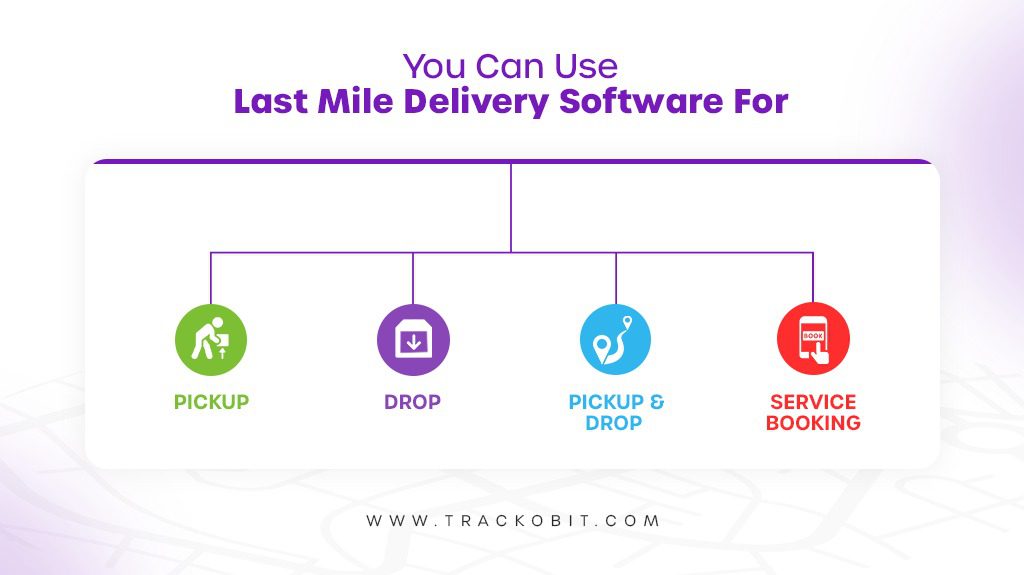
D2C (Direct-to-Consumer) Industry
With eCommerce and rising prominence of social media and digital marketing, the D2C industry has boomed massively. In India alone, the market is as big as $55 billion, and it is only growing. Maximising the delivery game to full power is exceptionally important in this segment because customer loyalty and retention are the most important things to keep the brand going.
The smaller logistics cycle sounds great for same-day or cheaper deliveries. However, it can be very confusing to handle if not done the right way, especially for smaller, local businesses.
- Drop Services to End Consumers: Similar to the eCommerce industry, D2C businesses also need to manage a complex network of delivery points to give the perfect cost:time ratio of delivery to the end consumers. However, if D2C businesses are taking care of their own logistics, they are probably only locally operational, making their trips shorter. Therefore, they have to build a bullet-proof rider roaster depending on the orders they have.
- Pick-up Services for Reverse Logistics: D2C businesses also need to manage pickup services from their customers. The problems and solutions they need are the same as the eCommerce industry. The only (and the biggest) difference is that making ad-hoc changes might be more complex when intricate trips are planned within a small area. Any slight delay might affect the rider’s availability in the next customers’ availability window. This is especially the case for time-specific orders such as flowers or other gifting items.
Hyperlocal Food and Grocery Delivery Industry
The hyperlocal food and grocery delivery industry has been booming at a CAGR of 9.50%, with $460.27 billion in revenue. The unique thing about this industry is that unlike others, it is not just an end-consumer centric industry. Instead, it also works both for B2B and B2C models. And to manage both, businesses will need last mile delivery platform.
Wondering how and why? Let’s see here:
- Restaurant Pickup: In the case of food delivery apps like Zomato, the driver has to pick up orders from the business’ one client, the restaurant to deliver to the business’ another client, the consumer. To maintain the proper restaurant pickups in an ad-hoc fashion, the company will need route and trip optimisation, dynamic roster management, and optimum carrier management (in case the business model includes multiple pickups and drops on the way).
- Delivery to Customer: For grocery delivery services like BlinkIt, the products have to be picked from the company’s warehouse and delivered to the end consumer. The most tricky aspect of this system is managing delivery within 8-15 minutes, depending on the promises made by the business. For that, the business needs to assign riders based on how far they are from the warehouse. Dynamic roster management is the key aspect of working well in this industry, something only manageable through software aid.
On-demand Home Service Industry
The pandemic has also brought in a boost in the on-demand home service industry. Even businesses like UrbanCompany and Pick My Laundry can benefit from last mile delivery software brings. Let us understand how:
- Appointment Management: Businesses like UrbanCompany offer on-demand at-home services. To provide these services, the business needs to connect with the appropriate technician who is available at the time the customer needs their services and also matches the right skill sets. The business also needs to build a schedule for the day for each employee, making employee roster management extremely important.
- Pickup Management: At-home services such as Pick My Laundry require the business to pick up something from the customer and send it for the availed service. Carrier management is a crucial aspect of this business because the business will need to send a rider according to the load expected from the customer’s end. Multiple point pickup also needs superior trip management and capacity management.
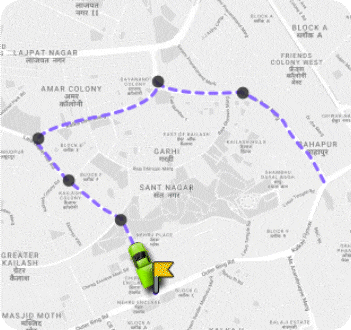
Last Mile Delivery Software
Have everything done within seconds: order sorting, route optimisation, and dispatch planning.
Don’t believe us?
How Last Mile Delivery Software Benefits All Doorstep Delivery/Service Industries
By now, you’ve had a look into each type of business’ requirements. You also know the features of last mile delivery software that’ll make operations simpler. Let us delve deeper into each feature to understand just how powerful the software is.
- Real-time Visibility: Live tracking helps managers know where their riders are. They can also share the riders’ live location tracker to the customers to give them more visibility on when to expect the product or service they’ve ordered.
- Route Optimisation Solutions: Finding the best route possible to cover all the tasks assigned to rides – that is the power of route optimisation solutions. The right software will even change the routes at the last moment to ensure that any possible delays on the route are carefully avoided along teh way.
- Delivery and Dispatch Management: From managing dispatches, understanding which trip to assign to which rider, to optimising routes and automating the entire day and workforce’s trip sequences and schedules, the possibilities of trip management solutions are limitless.
- Rider Roster Management: Last mile delivery tracking software can create roasters for each rider and also provide a clean workflow calendar for managers. Therefore, everyone knows what they have to do at any given time, accounting for both ad-hoc and scheduled tasks.
- Order Management: The software offers an end-to-end order fulfilment automation. This eases order management, on-field rider management, and facilitates comprehensive workflow supervision for managers.
- Capacity Management: The best last mile delivery software can automatically perform vehicle capacity management and carrier management. Therefore, managers save a lot of time maintaining an efficient balance between the number and quality of deliveries.
- Proof of Delivery: ePODs play a crucial role in both building customer relations and managing a smooth organisational workflow. A good last mile delivery software will be able to provide you with multiple options of POD collection!
- Insightful Reports: Nothing can beat analysis and the hard work put into strategizing, and insightful reports help you do just that! Last mile delivery software can collect data from every point of the way, and managers can use that data to understand what is working and what isn’t.
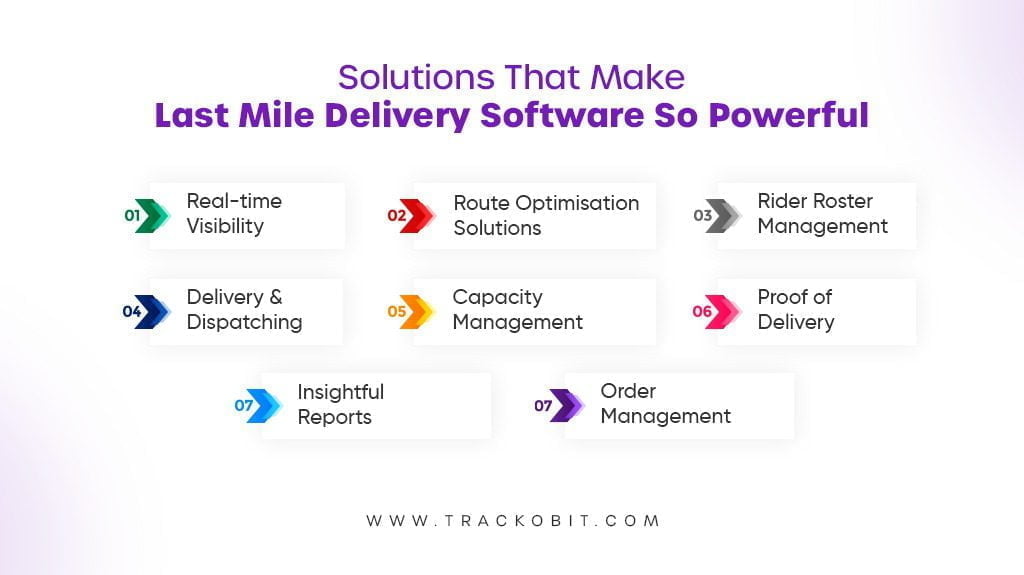
Summing Up
We live in a fast-paced world where people generally do not have the time to go out and get their products. Hence, the rise of last mile delivery is inevitable, and now is the time to tap this market!
And how are you going to shine brighter than your competition? By providing the fastest, most affordable, and most consumer-friendly service! And how are you going to provide that service? By using the best last-mile delivery software to its fullest, of course!
If you are wondering how to choose the best last mile delivery software, here’s a blog you can read about that! Choose carefully!
Choose TrackoMile! Talk To Our Experts!
Ayushi Nagalia is a Senior Content Specialist at TrackoBit. She is a marketing maverick with a lush background in literature. With years of experience crafting content for various niches, she speciali... Read More
Related Blogs
-
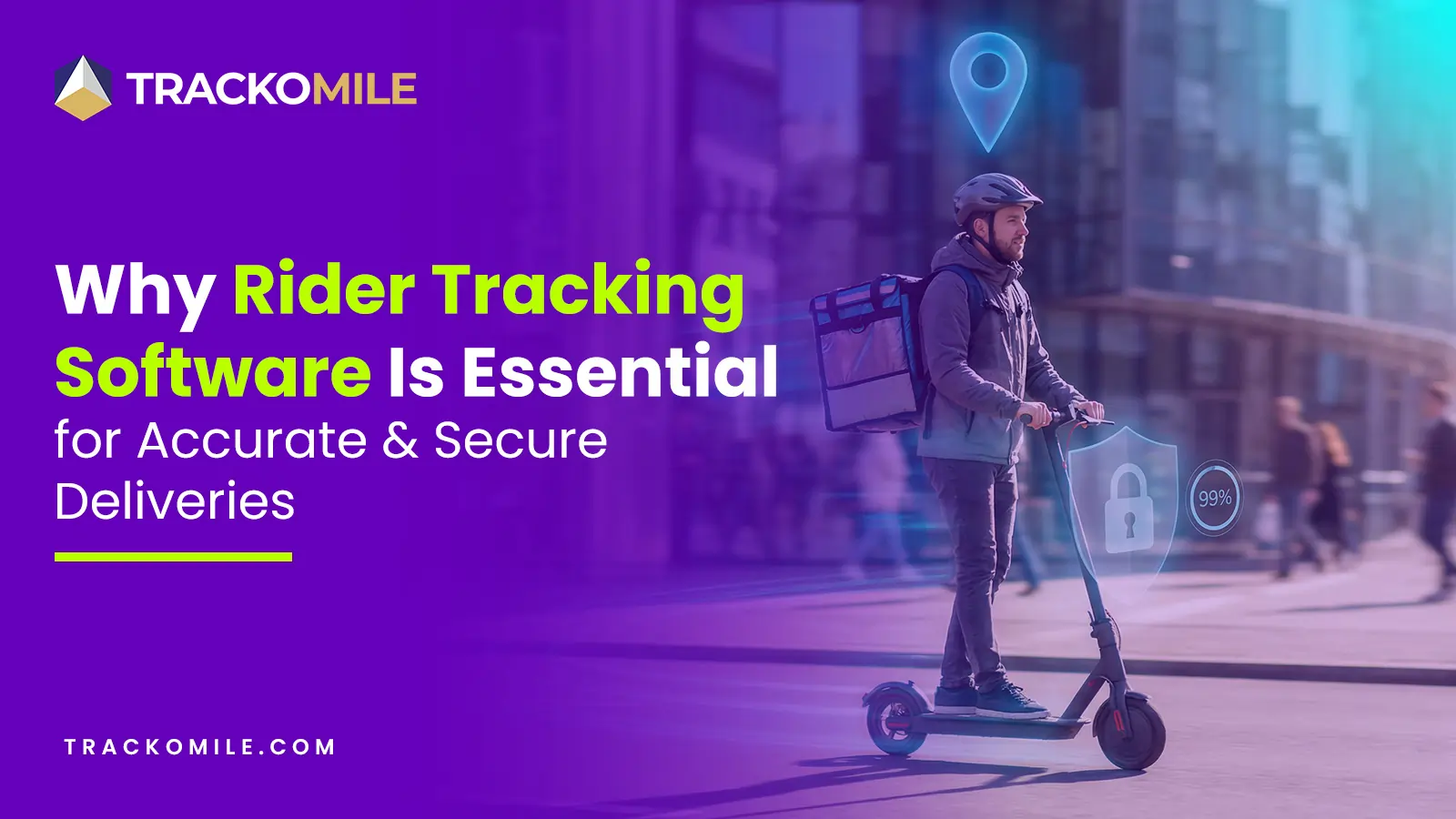
How Rider Tracking Software Improves Delivery Accuracy and Reduces Fraud
Tithi Agarwal December 8, 2025Rider tracking software improves delivery accuracy with real-time GPS visibility and automated ePOD. It also enables route optimisation and fraud…
-
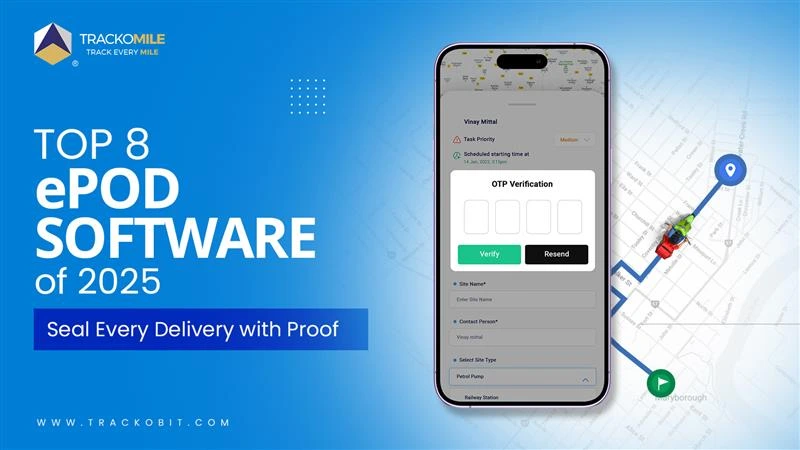
Top Electronic Proof of Delivery (ePOD) Software in 2025
Tithi Agarwal September 25, 2025Electronic proof of delivery has become the backbone of modern logistics. Explore the top 8 ePOD software in 2025 and…
-
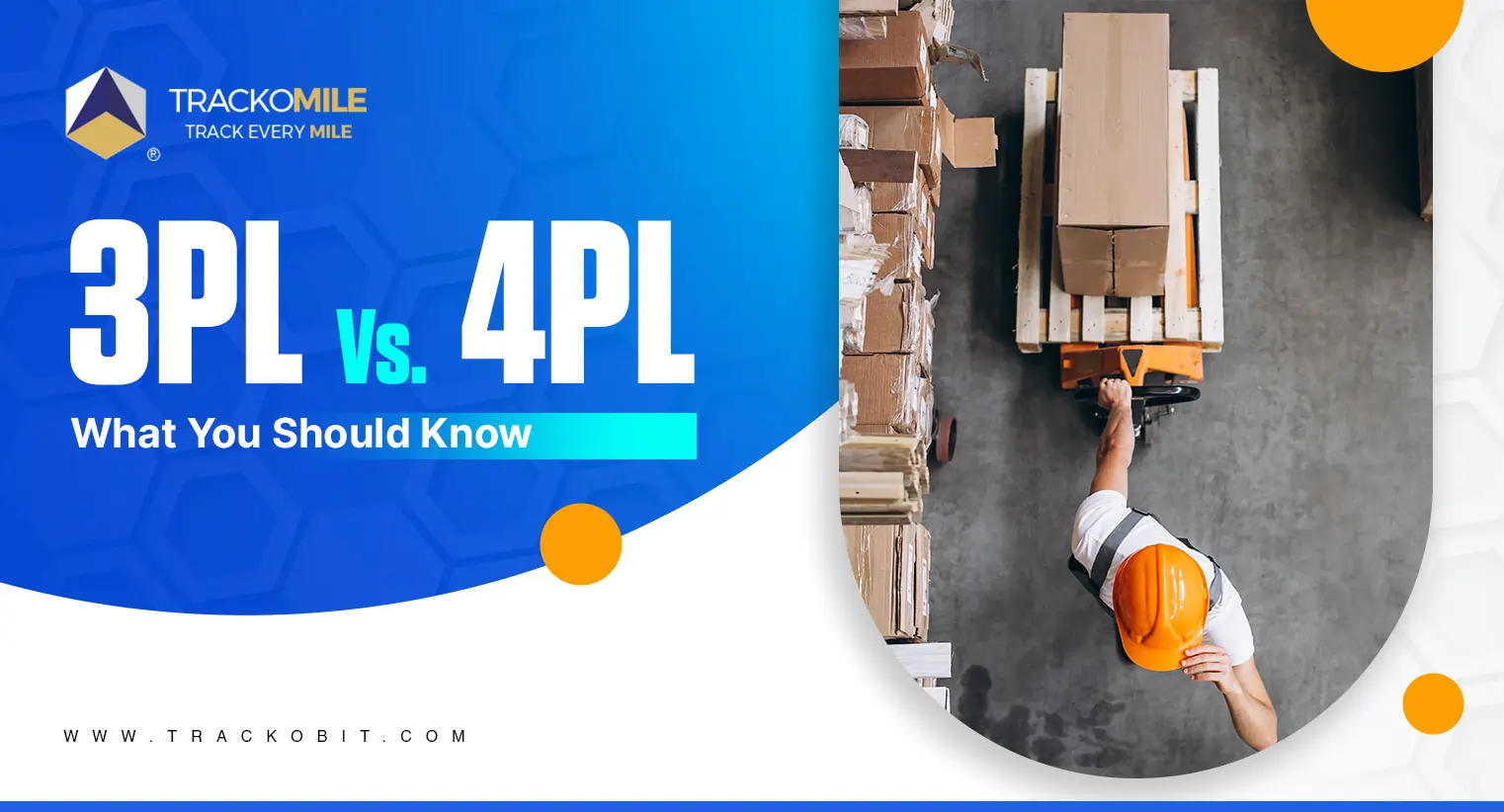
3PL vs. 4PL: Which is Best for Your Business?
Tithi Agarwal September 25, 2024Confused about choosing between 3PL and 4PL for your retail supply chain? Read this blog to find out which is…
-
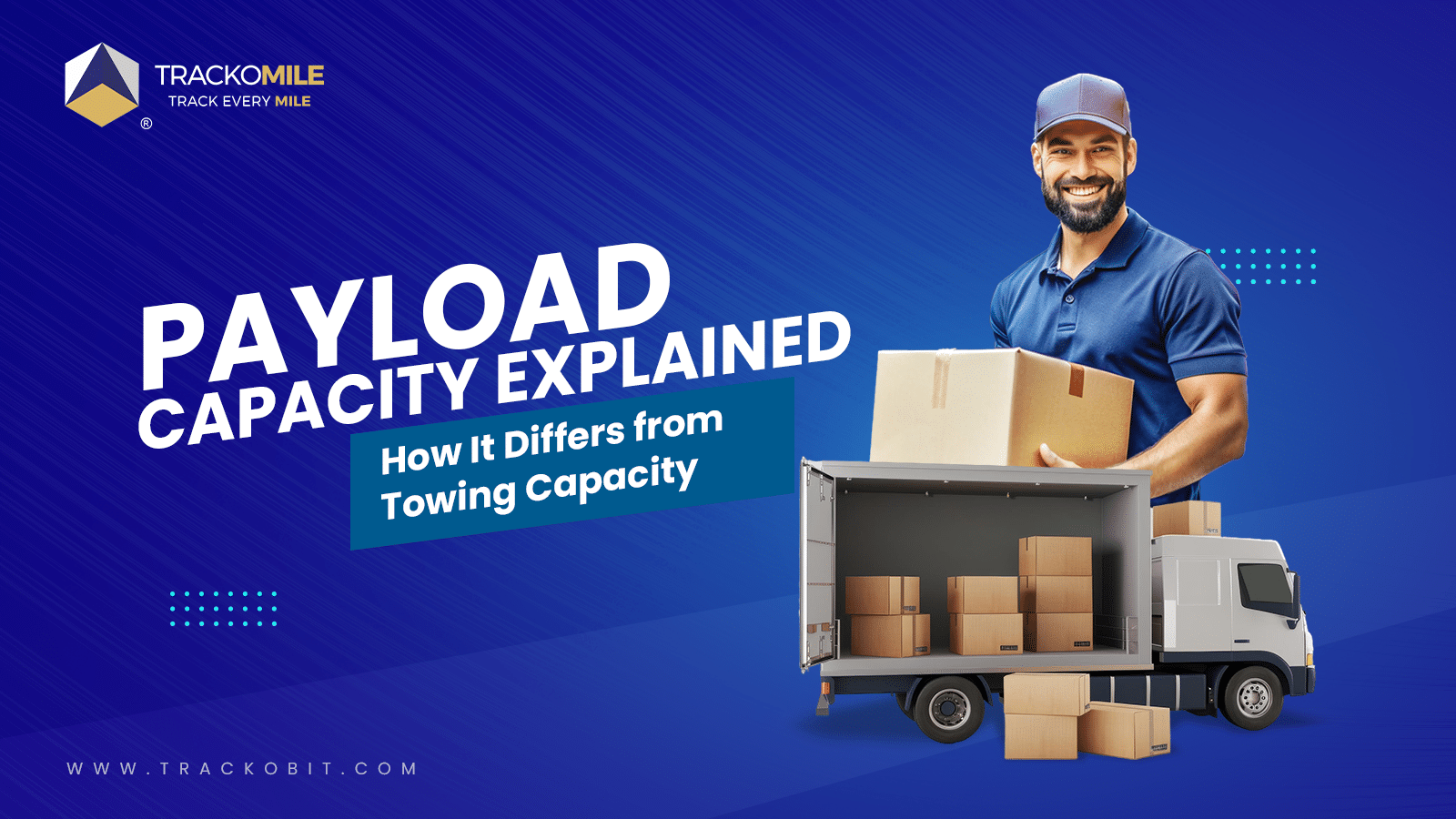
What is Payload Capacity? Payload Capacity Vs. Towing Capacity
Tithi Agarwal September 10, 2024Payload capacity is the total weight a vehicle can safely carry, and it is crucial for safety and compliance. Exceeding…

Subscribe for weekly tips to supercharge your last-mile delivery.
Your inbox awaits a welcome email. Stay tuned for the latest blog updates & expert insights.
"While you're here, dive into some more reads or grab quick bites from our social platforms!"Stay Updated on tech, telematics and mobility. Don't miss out on the latest in the industry.
We use cookies to enhance and personalize your browsing experience. By continuing to use our website, you agree to our Privacy Policy.

































